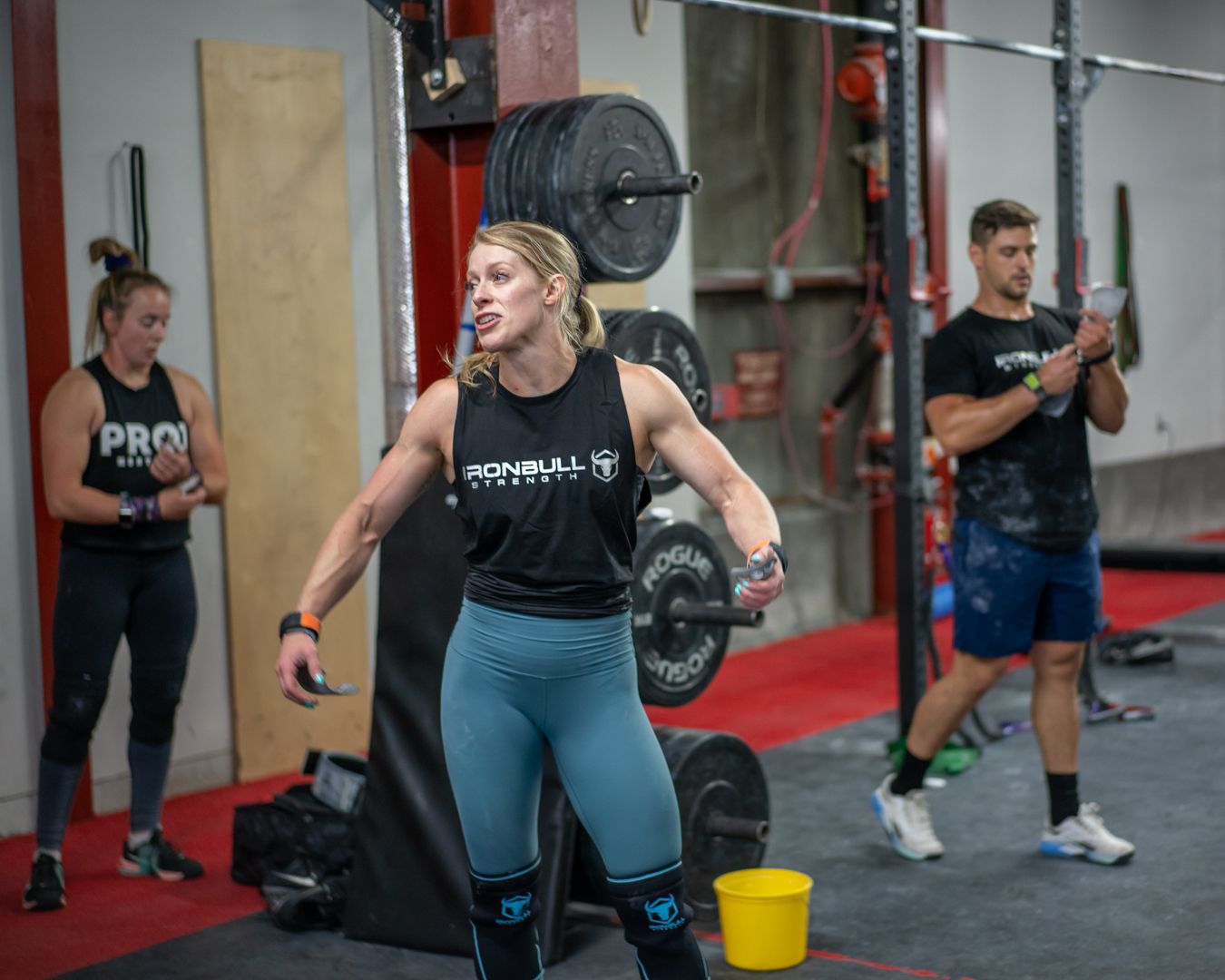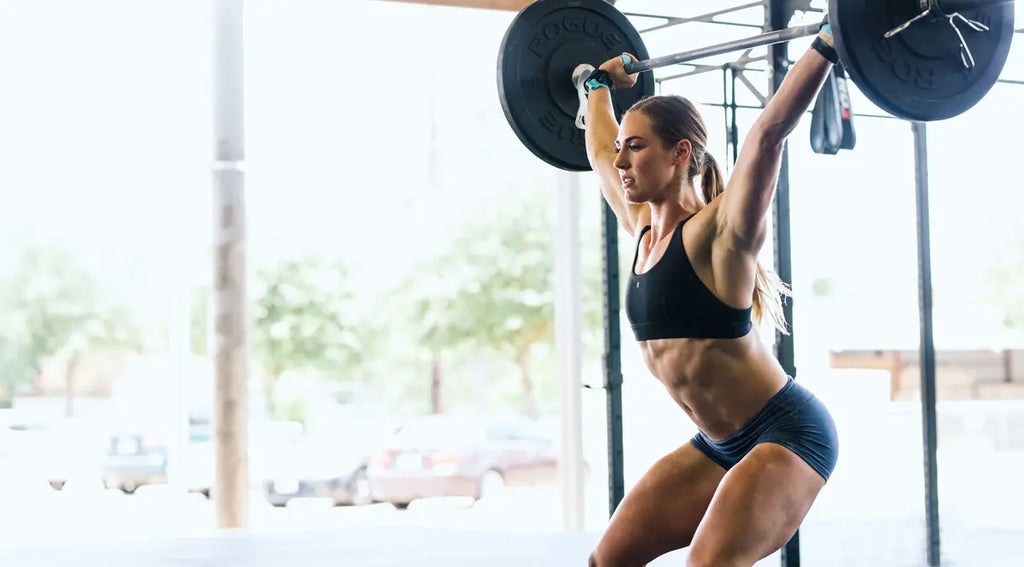The Complete List of CrossFit Terms You Need to Know

CrossFit isn't just another workout routine — it's a culture, a community, and for many, a way of life.
While it's famous for pushing people to their limits (yes, sometimes to the point of feeling sick), it's equally known for building strength, resilience, and camaraderie.
As a leading provider of gym equipment to gyms across Canada, the US, and Europe, we understand the importance of both the physical and linguistic components of CrossFit.

Dive into sessions of Fran, tackle the Filthy Fifty, or boost your fitness to compete in the CrossFit Games.
Ready to decode what everyone in the box is talking about?
Let’s break down the common CrossFit terms and acronyms you’ll need to navigate your WODs like a pro.
Whether you're a newbie or a veteran, knowing this terminology is your first step into a broader world of fitness.
Foundational Knowledge
- Affiliate - A gym officially recognized by CrossFit, Inc.
- AMRAP - "As Many Rounds as Possible" within a given time frame.
- Box - Slang for a CrossFit gym.
- Benchmark - Standardized workouts used to measure progress.
- CrossFit Games - The annual competition seeking to crown the fittest on earth.
- CrossFit Open - A worldwide, inclusive event allowing competitors to participate via their local gyms.
- EMOM - "Every Minute on the Minute," a workout style that prescribes specific tasks at the start of each minute.
- For Time - Complete the prescribed amount of work as fast as possible.
- Hero WODs - Workouts named after military, law enforcement, and first responders who have died in the line of duty.
- Ladder - A workout format where the number of reps increases each round.
- MetCon - Short for "Metabolic Conditioning," these workouts are designed to increase metabolic demand and energy usage.
- PR (Personal Record) - The best performance recorded in a particular exercise or workout.
- Rx'd - Performing workouts exactly as prescribed without any modifications.
- Scaled - Modifying elements of a workout to suit one's skill level or fitness.
- WOD - "Workout of the Day," the set of exercises prescribed for that day in a CrossFit gym.
- Zone Diet - A diet plan often recommended for CrossFitters focusing on balancing protein, carbohydrates, and fats.
- GPP - General Physical Preparedness, the basis of CrossFit programming to be physically prepared for any task.
- Kipping - A technique used in pull-ups and other movements to gain momentum from body motion.
- Mobility - Exercises and stretches used to enhance a person’s range of motion and overall movement efficiency.
- The Girls - A series of benchmark workouts named after women, like "Fran" and "Grace," used to measure an athlete’s performance over time.
Movements
- Air Squat - A bodyweight squat done without weights.
- Back Squat - A squat performed with a barbell positioned on the trapezius muscles at the upper back.
- Front Squat - A squat performed with the barbell resting against the shoulders in front.
- Overhead Squat - A squat performed with the arms extended and a barbell held overhead.
- Deadlift - Lifting a weighted barbell off the ground to the level of the hips, then placing it back down.
- Sumo Deadlift High Pull - A wide-stance deadlift followed by a high pull of the barbell to the chin.
- Clean - Lifting the barbell from the floor to a racked position at the shoulders in one fluid motion.
- Hang Clean - A clean performed from the 'hang' position, which is anywhere above the ground but below the hips.
- Power Clean - A clean performed without the full squat to catch the bar.
- Clean and Jerk - A compound movement where the barbell is first cleaned to the shoulders, then jerked overhead.
- Snatch - Lifting the barbell from the ground directly overhead in one continuous and rapid movement.
- Power Snatch - A snatch performed without the full squat to catch the bar.
- Thruster - A front squat combined with a push press.
- Push Press - A shoulder press aided by a slight dip and drive through the legs.
- Push Jerk - Similar to the push press, but with a re-bending of the knees to catch the bar overhead.
- Split Jerk - A version of the jerk where one leg is forward and the other back to catch the bar overhead.
- Pull-Up - An upper body pull movement where the body is pulled up until the chin clears the bar.
- Kipping Pull-Up - A pull-up that uses a leg kick and hip snap to gain momentum and height.
- Muscle-Up - A movement that transitions from a pull-up to a ring dip, bringing the torso above the rings or bar.
- Ring Dip - A tricep dip performed on gymnastics rings, requiring more stability than bar dips.
- Burpee - A full-body exercise involving a squat, jump to a plank, push-up, return to squat, and ending with a jump.
- Box Jump - An explosive jump onto and down from a sturdy box.
- Wall Ball - A squat followed by throwing a medicine ball to a target height on a wall.
- Double-Under - A jump rope exercise where the rope passes under the feet twice for each jump.
- Handstand Push-Up - An inverted push-up performed while in a handstand.
- Toes-to-Bar - Hanging from a bar and bringing the toes up to touch the bar.
- Knees-to-Elbows - Hanging from a bar and bringing the knees up to touch the elbows.
- L-Sit - Holding the body in a seated position, legs extended, off the ground typically on parallettes or rings.
- Pistol Squat - A single-leg squat where the non-working leg is held in front.
- Rope Climb - Climbing a rope using arms and legs, often performed for speed or number of ascents.
Workouts
- WOD (Workout of the Day) - The specific set of exercises prescribed for that day at a CrossFit gym.
- Hero WODs - Workouts named after military, law enforcement, and first responders who have died in the line of duty, known for their high intensity and volume.
- The Girls - A series of benchmark workouts named after women, each designed to test different aspects of fitness and performance.
- Murph - One of the most famous Hero WODs, consisting of a 1-mile run, 100 pull-ups, 200 push-ups, 300 squats, followed by another 1-mile run.
- Fran - A benchmark workout involving a thruster (front squat/push press combo) and pull-ups in a 21-15-9 rep scheme.
- Cindy - A 20-minute AMRAP workout consisting of 5 pull-ups, 10 push-ups, and 15 squats.
- Grace - A workout where the goal is to complete 30 clean and jerks as quickly as possible.
- Isabel - Similar to Grace but with 30 snatches instead of clean and jerks.
- Filthy Fifty - A chipper-style workout involving 50 reps of 10 different exercises, completed as quickly as possible.
- Fight Gone Bad - A workout designed to simulate the timing of a mixed martial arts bout with three rounds of exercises, each lasting five minutes.
- Tabata - This refers to workouts following the Tabata protocol, typically 20 seconds of ultra-high-intensity exercise followed by 10 seconds of rest, repeated for 4 minutes.
- Chipper - Workouts that involve completing a series of different exercises, usually at high reps, done sequentially and designed to challenge endurance and willpower.
- EMOM (Every Minute on the Minute) - Workouts where a specific task must be completed at the start of every minute for a set amount of time.
- Double Helen - A more challenging version of the classic "Helen" workout, involving two rounds of a 400-meter run, 21 kettlebell swings, and 12 pull-ups.
- Death by [Movement] - An EMOM workout where the number of reps increases with each minute until the participant can no longer complete the required number of reps within the minute.
- CrossFit Total - A test of strength where the athlete establishes a one-rep max for three lifts: back squat, press, and deadlift.
- Triplet - A workout structure involving three different movements that tax different physical capacities.
- Couplet - A workout format that pairs two movements that are typically performed in alternating fashion throughout the workout.
- Ladder - A workout where participants increase or decrease the reps for each round.
- AMRAP (As Many Rounds As Possible) - A type of workout where the athlete aims to complete as many rounds of a series of movements in the allotted time.
Equipment
- Barbell - Standard equipment for weightlifting in CrossFit, used for exercises like snatches, clean and jerks, and deadlifts.
- Bumper Plates - Rubber-coated weights that fit on barbells, designed to be safely dropped from overhead or the waist.
- Kettlebell - A cast-iron ball with a handle, used for ballistic exercises like swings, snatches, and goblet squats.
- Dumbbell - Used for a variety of exercises in CrossFit, offering a different challenge compared to barbells due to their size and handling.
- Pull-up Bar - A bar mounted above head height, used for pull-ups, chin-ups, and kipping.
- Jump Rope - Essential for cardio workouts, especially for exercises like double-unders and single skips.
- Medicine Ball - Used for wall balls, a staple CrossFit exercise, as well as for other throwing and catching exercises.
- Plyo Box - A sturdy box used for box jumps, step-ups, and other plyometric exercises.
- Rings - Gymnastic rings used for dips, muscle-ups, and various other bodyweight exercises.
- Rowing Machine (Ergometer) - Used for cardio workouts, simulating rowing.
- Assault Bike - A stationary bike with arm handles, providing full-body cardio workouts.
- Climbing Rope - Used for rope climbs, a test of strength and endurance.
- GHD Machine (Glute-Ham Developer) - Used for strengthening the posterior chain with exercises like GHD sit-ups and back extensions.
- Squat Rack / Power Rack - A frame used to hold a barbell at an adjustable height, essential for squatting and other lifts.
- Weight Vest - A vest with added weight, used to increase the difficulty of bodyweight exercises.
- Ab Mat - A small, portable mat that supports the lower back during sit-ups, allowing for a greater range of motion.
- Resistance Bands - Used for adding resistance to various exercises or assisting with others, like pull-ups.
- Weightlifting Belt - Provides support during heavy lifts, helping to stabilize the core and protect the lower back.
- Speed Rope - A lighter, faster jump rope designed for quick rotations and effective for advanced jump-rope exercises.
- Sandbag - Used for weighted carries and other functional movements, offering a dynamic challenge due to its shifting weight.
- Landmine - A barbell attachment that pivots from a fixed point, used for rotational strength exercises.
- Slam Ball - A heavier, more durable medicine ball designed to be thrown against the ground without bouncing.
- Battle Ropes - Thick ropes used for cardio and upper body endurance workouts through various whipping and slamming motions.
- Parallettes - Small gymnastics devices used for dips, handstand push-ups, and other bodyweight exercises.
CrossFit is more than just a fitness regimen; it's a lifestyle that pushes its adherents to the limits of their physical and mental endurance.
With this comprehensive list of CrossFit lingo, you’re now better prepared to dive into any conversation at your local box and tackle your next workout with confidence.
Remember, every term learned is a step closer to deeper involvement in the CrossFit community.
Whether you’re here to improve your fitness, meet like-minded athletes, or challenge yourself in new ways, CrossFit offers a dynamic environment that fosters growth, resilience, and camaraderie.









